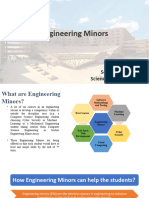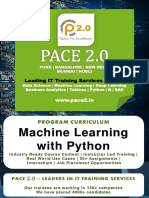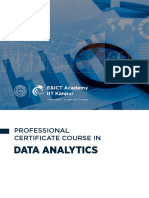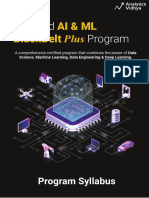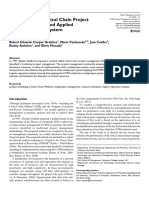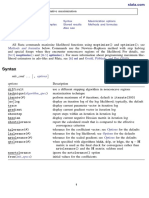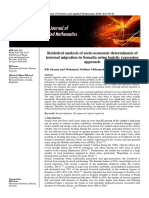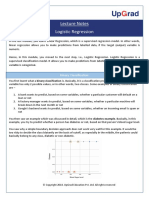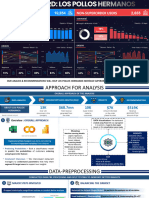www.airtics.
org
�TABLE OF
CONTENTS
About Airtics Education 03
About Westford Education 04
About UCAM 06
Program Overview 08
Program Structure 09
Training Key Features 16
Eligibility & Prerequisites 17
Tools/frameworks/libraries 17
Application & Use Cases 18
Capstone Projects 18
Internship/Projects 19
Placement Support 19
Certification 19
w w w. a i r t i c s . o r g
02
� AIRTICS EDUCATION
The next evolution of online learning from the prestigious Westford
Education Group, Airitcs Education, offers the top IT certification
programs, ideal for working professionals and fresh graduates to help
them advance in those fields.
A pioneer in technical education solutions, Airtics Education intends to fill
tech learning gaps. It enables learners to excel in technology by adopting
a teaching methodology via a curriculum designed and fine-tuned by
expert academicians and industry specialists.
Intends to fill the gap in tech-related industry requirements, Airtics
provides training and internships in Artificial Intelligence, Data Science,
Robotic Process Automation, Machine Learning, Business Intelligence,
Data Analytics, Data Visualization, and related topics.
At Airtics Education, we have combined cutting-edge
material with the best online technology and instructional
design to improve learning outcomes while encouraging
engagement and collaboration.
w w w. a i r t i c s . o r g
03
�WESTFORD
EDUCATION
Westford Education Group (WEG) is a leading
provider of accredited international education to
aspiring learners across the globe. Headquartered in
the UK, WEG is a pioneer in providing various
Academic Degrees, Professional Certificates and
Diploma courses in association with international
accredited and recognized organizations and
universities.
The study programs offered at WEG range from
Undergraduate to Doctoral level consisting of
master's, post graduate diplomas and doctoral degrees. WEG
also provides specialized courses such as Doctor of Business
Administration, Doctorate in Management, and Master of
Business Administration (MBA) to name a few. Our core
competence lies in providing higher National diplomas and
professional certificate courses encompassing a wide range of
domains specific to various industries.
Westford is fast emerging as a reputed brand of
global education providers. WEG comprises 9
independent brands, 7 brands of Higher
Education, 2 brands of K-12 education, and 1
brand operating in Sports Management.
w w w. a i r t i c s . o r g
04
� w w w. a i r t i c s . o r g
05
�Universidad Católica de Murcia
Universidad Católica de Murcia (UCAM), founded in 1996, is a fully-accredited European
University based out of Murcia, Spain. With learning centres in the Middle East and Southeast
Asia, UCAM aims to provide students with the knowledge and skills to serve society and
contribute to the further expansion of human knowledge through research and development.
The university offers various courses, A fully accredited European
including 30 official bachelor’s University
degrees, 30 master’s degrees and ten
Spain’s number two private university
technical higher education
in academic output and quality
qualifications through its Higher
Vocational Training Institute, in Recognised by the European Higher
addition to its in-house qualifications Education Area
and language courses. Agreements with 167 universities
around the world
UCAM is accredited by ANECA
(National Agency for Quality First Spanish university to secure
Assessment and Accreditation of accreditation from ANECA
Spain) and the Ministry of Education Four stars in the QS Stars rating
regarding 17 of its undergraduate system
degrees.
w w w. a i r t i c s . o r g
06
� w w w. a i r t i c s . o r g
07
� PROGRAM
OVERVIEW
MASTER IN
DATA SCIENCE
Master in Data Science program aims to teach
students everything they will need to know to
be a data scientist. The curriculum is made up
of 2 core subjects – Computer Science &
Statistics, students will learn how to work with
data using python, statistics & algorithms to
solve complex problems. Students can
choose two elective subjects depending on
their previous academic background and
interests. If students have a
background in statistics, they can take
data modeling in statics as an elective
or if students have a background in
computer science they can opt for
Artificial Intelligence & Block Chain. All
students are required to undertake a data
science capstone project to have a
hands-on working experience solving real
world problems.
Course Duration: 12 Months
Course Modules: 6 Modules
w w w. a i r t i c s . o r g
08
�Module 1 - WORKING WITH DATA
Module Description
This module inculcates practical understanding and a framework that allows the execution
of essential analytics actions such as extracting, cleaning, changing, and analysing data. In
this module, learners grasp the knowledge of programming languages, tools, frameworks,
and libraries utilised throughout the course to acquire and model data sets. Data analysis is
accomplished through visualising, summarising, and developing rudimentary data handling
abilities by paying attention to variable types, names, and values. In addition, managing data
using dates, strings, and other elements, enhances learners’ abilities to perform data
research and generate visualisations.
Learning Outcomes
L01 Analyse information using data visualisation, summary, and counting tools
L02 Acquire rudimentary skills in data handling, focusing on variable types, names,
and values
L03 To learn how to use the pipe operator to combine numerous tidying operations in
a chain
L04 The ability to work with data that includes dates, strings, and other variable
Content Covered
Data Cleaning Techniques Python libraries and framework in
Data Preprocessing data analysis
Data Manipulation 2D Scatter Plot
Core Python Programming 3D Scatter plot
Data Visualisation using Matplotlib Pair plots
Linear Algebra Univariate, Bivariate, and Multivariate
Statistics and Probability Histograms
Exploratory data analysis Boxplot
Variance, Standard Deviation, Median IQR (InterQuartile Range)
Bar charts and Line charts Data analysis with Pandas
w w w. a i r t i c s . o r g
09
�Module 2 - DATA ANALYTICS IN BUSINESS
PROCESSES
Module Description
This module addresses the principles of creating reliable spreadsheet models, translating
conceptual models into mathematical models, and applying them in spreadsheets. It also
demonstrates a knowledge of three analytic tools in Excel, Excel functions, and the process
of auditing spreadsheet models to assure accuracy. Additionally covered in this module are
Decision analysis, Payoff Tables, and Decision Trees. Microsoft Power BI helps users derive
practical knowledge from data to solve business concerns, bringing analytical models to
corporate decision-making. Learners acquire insight into advanced analytic features of
Power BI, such as prediction, data visualisations, and data analysis expressions.
Learning Outcomes
L01 Critically analyse the use of business data in an organisational
decision-making context
L02 Demonstrate a critical understanding of business analytics principles in
management functions
L03 Apply appropriate data management and analysis techniques to retrieve, organise
and manipulate data
L04 Apply appropriate statistical data analysis methods and visualisation techniques to
make sound business decisions
Content Covered
Creating Spreadsheet models Computing Branch Probabilities
What-If analysis Utility Theory
Functions for modelling Data streaming in Power BI
Auditing Spreadsheet models Visualisation in Power BI
Predictive and Prescriptive Data Analysis expressions
Spreadsheet models Report Views in PowerBI
Problem Identification Data Sorting
Decision Analysis Data Transformation
Decision Analysis with or without
Probabilities
w w w. a i r t i c s . o r g
10
�Module 3 - DATA MINING TECHNIQUES
Module Description
The data mining process includes collecting necessary information from enormous
databases that help make a knowledgeable decision. The module demonstrates data mining
techniques like data processing, pattern discovery, and trends in information. These methods
are employed to obtain the skills and abilities for applying data integration, cleansing,
selection, and transformation on tables and graphs for knowledge discovery. Python matrix
libraries allow learners to construct some realistic representation of text mining by executing
tasks such as classification, estimation, segmentation, forecasting, sequence, and data
association.
Learning Outcomes
L01 Understand the fundamentals of text mining and analysis, including identifying
exciting patterns, extracting helpful knowledge, and supporting decision-making
L02 Explore fundamental principles of text mining and essential algorithms and some
of their practical applications
L03 Be able to apply the learned knowledge and skills to implement scalable pattern
discovery techniques on large volumes of transactional data
L04 Engaging in meaningful discussions about pattern evaluation metrics & investigating
techniques for mining various patterns, including sequential and sub-graph patterns
Content Covered
Introduction to Data mining Mining-friendly data representations
Data Mining in a Python-based Text Representation for Data Mining.
environment Why is text complex?
What is a data warehouse Text mining
How to find patterns? Data Modelling, Evaluation, & Deployment
Affinity Analysis in Text Mining
Product rесоmmendаtіоn Exemplary techniques: Bag of words
Introduction to Database Mining representation in Text Mining
Databases and SQL Frequent Subgraph Mining
DDL, DML, Joins, and Schemas Data Filtering
How to use Python Matrix Libraries Power Query Editor
on Datasets. Risk Analysis
Lоаd the Dataset with NumPy Sensitivity Analysis
w w w. a i r t i c s . o r g
11
�Module 4 - ALGORITHMS IN DATA SCIENCE
Module Description
This module provides extensive knowledge of splitting data into training, validating, and
creating test sets. Develop and assess predictive mining models by integrating a framework
and practical perception. There are numerous performance metrics for estimation and
categorization systems presented. The most prevalent predictive modelling approaches,
including artificial neural networks, support vector machines, k-nearest neighbour, Bayesian
learning, ensemble models, and different decision trees, are reviewed in this module, along
with their internal workings, capabilities, and applications. Most of these strategies can tackle
prediction difficulties of the classification and regression kinds. They are commonly employed
to address challenging prediction challenges when other, more traditional approaches fail to
deliver results.
Learning Outcomes
L01 Introduce the fundamental algorithmic concepts, including sorting and searching,
divide and conquer, and complex algorithms
L02 Sort data and use it for search; break down a huge problem into smaller ones and
answer them recursively; apply dynamic programming to genomic research;
and more
L03 Discuss and construct the most often used data structures for modern computing
L04 To be able to use the most industry-used data structures in modern computing
Content Covered
Static Holdout Method Nearest Neighbor Method for Prediction
k-Fold Cross-Validation Classification and Regression tree
Class Imbalanced Data Support Vector Machines
Evaluating the Classification of Process-Based Approach to the Use
Categorical Outcomes of SVM
Evaluating the Estimation of Naïve Bayes Methods
Continuous Outcomes Bayesian Networks
Logistic Regression Neural Network Architectures
k-nearest Neighbor Ensemble Modelling
w w w. a i r t i c s . o r g
12
�SPECIALISATION MODULE 1
STATISTICAL DATA MODELLING
Module Description
This module gives learners the insight to apply many prediction models and grasps linear
regression. Create predictions based on a group of input variables using regression analysis
methods. Learners investigate the way to model an extensive range of real-world interactions
using complicated statistical methodologies, such as generalised linear and additive models.
This module inculcates intermediate and advanced statistical modelling methodologies. It is
specifically created for learners to develop proficiency in linear regression analysis,
experimental design, and extended linear and additive models. Based on these skills,
interpreting data, discovering links between variables, and generating predictions are made
simpler via intuitive representations.
Learning Outcomes
L01 Differentiate between various types of predictive models and Master linear
regression
L02 Understand the inner workings through algorithms of different models
L03 Analyse and explore the results of logistic regression and understand when to
discriminant analysis
L04 Maximise analytical productivity by analysing different models and interpreting
their accuracy in a well-organised manner
Content Covered
Selecting a Sample Inference and Regression
Point Estimation Multiple Regression Model
Sampling Distributions Logistics Regression
Interval Estimation Predictions with Regression
Hypothesis Tests Model Fitting
Statistical Inference and practical Tableau data model
significance Shape and data transformation using
A Simple Linear Regression Model Tableau Query Editor
Least Square method Tableau Report View
w w w. a i r t i c s . o r g
13
�SPECIALISATION MODULE 2 -
APPLICATIONS OF DATA IN ARTIFICIAL
INTELLIGENCE & BLOCKCHAIN
Module Description
In this module, learners will better grasp artificial intelligence (AI) applications in business and
comprehend AI decision-making. Through breakthroughs in IoT and the emergence of
Blockchain, this curriculum prepares students with a broad foundation of AI-enabled
software solutions. As learners continue through this module, they become acquainted with
the technology that powers the automated world—knowing the sorts of algorithms and how
they may be utilised to enhance or replicate human behaviour across diverse applications.
This module teaches about AI, IoT, Blockchain, and machine learning components while
building on a solid conceptual framework that will present rigorous, hands-on, and step-by-
step ways to tackle realistic, complex real-world challenges.
Learning Outcomes
L01 Introducing Artificial Intelligence (AI), exploring its features and variants in the
business domain. Furthermore, to understand the business context of AI & interpret
AI decision-making
L02 Understand & create an AI implementation plan for a business setup through
recognition of suitable model parameters
L03 To further explore the components of Blockchain & understand Distributed Ledger
echnology (DLT) concept, features, benefits, and relevance in application
L04 Understanding Hyperledger, Smart Contracts, and IoT (Internet of Things) in
applied business models to assess the impact in the long term
Content Covered
Introduction to Artificial intelligence Text Classification
AI enables applications Topic Modelling
What is Deep Learning Major components of IoT
Artificial Neural Networks Variety of Sensors
Image Processing and OpenCV Actuators
Introduction to NLP IoT protocols at various layers
Artificial Neural Networks Applications and user interface in IoT
Text Processing Introduction to Blockchains
w w w. a i r t i c s . o r g
14
� Smart factories of tomorrow and the Introduction to DLT
Industrial Internet of Things DLT features, benefits, & usage in
Introduction and usage of Blockchain
Hyperledger & Smart Contract Types of Blockchains
Blockchains Structure Why Blockchain?
Centralised, Decentralised, and Building AI and ML applications
Distributed systems using Blockchain technology
Capstone Project
RESEARCH METHODS & DISSERTATION
Module Description
The purpose of this module is to discuss and explain the role of Data science and its practices
in an organisation and their influence on the overall performance and competence of the
organisation. This module is designed to develop an understanding of the contemporary
practices and competence to develop a research or design question, illustrate how it links to
current knowledge and carry out the study in a systematic manner. Learners will be
encouraged to pick a research/development project that displays their past learning in the
data science domain. It is meant to acquire an understanding of Data Science and the
paradigm shift in the approaches and methods related to various functions of DS like data
visualisation, probability, inference and modelling, data mining, data organisation, regression,
and machine learning to name a few. It also endeavours to highlight the role and significance
of data analytics and data modelling during the planning, decision-making, and
implementation of change in the organisation. Upon successfully completing the module,
the participants will have comprehensive knowledge about the broader data analysis context
and a data product to demonstrate their data science expertise to potential employers or
educational programs.
Learning Outcomes
L01 Conduct independent Research and Development within the context of a
Data Science Project
L02 Developing the ability to independently solve problems using analytics and
data science
L03 Communicate technical information clearly and succinctly to a broad,
non-specialist audience.
L04 Create detailed written documentation to a standard expected of a professional in
the field of Data Science & evaluate Project outcomes with reference to key
research publications in the relevant field.
w w w. a i r t i c s . o r g
15
� TRAINING
KEY FEATURES
200 hours of live instructor-led training
3 industry based projects, 6 assignments
24/7 support and LMS Access
Hands on experience with latest tools & applied projects
Live engagement classes by seasoned academics and
professionals
Internship/Projects
Flexible timing for working professionals
EMI option
w w w. a i r t i c s . o r g
16
� ELIGIBILITY
Students seeking admission to the course may have to fulfill
the following criteria/requirement.
Bachelor’s Degree from a recognized University
Proficiency in the English language
PREREQUISITES
Due to its involvement in modern Machine Learning
algorithms with math and programming, candidate having
knowledge with linear algebra, probability and calculus
could be a plus.
TOOLS/FRAMEWORKS/
LIBRARIES
Scripting Tools : Python
Tools /Libraries : Pandas,numPy, seaborn, matploltlib, cufflinks, scikit, NLTK,
CoreNLP, spaCy, PyNLP, Tensorflow, Keras, Open CV, Power BI, Excel
IDE Shell : Jupyter Notebook, google colab, pycharm, visualstudio code
w w w. a i r t i c s . o r g
17
� APPLICATION & USE CASES
Traffic
Road Safety eCommerce
Management
Banking Marketing & Sales Health Care
Forecasting Manufacturing Retail
CAPSTONE PROJECTS
Showcase your capability with the real-world projects
Bring Your Own Project
Learn to solve a problem that you/your organisation is facing using Data Science
OR
Choose From Curated Capstone Projects
HOUSE RENTAL IMAGE
PREDICTION CLASSIFICATION
BUSINESS INSIGHTS
REPORTING
w w w. a i r t i c s . o r g
18
� INTERNSHIP/PROJECTS
Airtics provides internships in the respective field for a period of 5-6 months to all eligible and
able students.
INTERNSHIP/PROJECTS INCLUDES:
Mentoring by software developers Internship certificate
Live workshops on projects Candidate's evaluation
After successfully completing the learning modules, eligible students
would move on to internships
PLACEMENT SUPPORT
Airtics’s high level of instruction has attracted an increasing number of
companies, and the placement scene is expanding. Candidates who
excel in internship will be eligible for placement at top MNC’s that work
with Airtics.
Deliver five proof-of- concept a month
We will have our partner companies review the POCs
3 guaranteed interviews
JD based Support training
Placement in MNC
CERTIFICATION
w w w. a i r t i c s . o r g
19
�Airtics Education : 704 - City Gate Tower,
Al Ittihad Road, Sharjah, United Arab Emirates.
Call: +971 6 745 2556, +971 6 531 2511
Mail: info@airtics.org





















